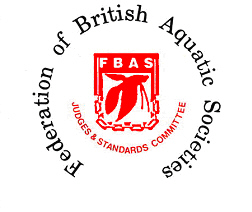



GENERAL
Unlike other pet animals, fish do not share the human environment and therefore do not impinge as much on to everyday life as might, say, a dog that needs exercising regularly or that needs to interact with us far more.
On the other hand, because they have their own environment, it is up to the owner to make sure that this is both set up and maintained correctly in order to provide the fish with the correct living conditions.
This Code of Practice will look at both of these issues, together with other important factors to be considered when keeping fish.
THE AQUARIUM
It is not just a matter of finding a water-tight container, filling it with water and giving the inmates a pinch of food from time to time.
SIZE OF AQUARIUM
Bearing in mind an aquarium is normally chosen to fit in with the existing home furnishings, the basic advice is always to choose the largest aquarium that will fit both the space and your finances.
Large aquariums maintain stable water conditions for longer than small aquariums.
The overall size has a distinct bearing as to the number of fish that it can support but this, in turn, depends on the type of fish you intend to keep.
Coldwater fish (Goldfish) and tropical marine fish generally require larger aquariums than tropical freshwater fishes.
A general guideline is to suggest 600mm long tanks for tropical freshwater, 900mm tanks and above for the other two interests.
Finally, you will require a 13amp power point adjacent to the position of the aquarium, and please make sure the plug has a circuit breaker fitted. Water and electrics are not good bedfellows.
BUILD QUALITY
It is important that the aquarium is built to the correct standard and capable of withstanding the considerable pressure that many litres/gallons water place upon it. The thickness of the glass used should comply with the industry standard.
If purchasing a second-hand aquarium insist it be filled with water before purchase to ensure it does not leak. Also if it there is no hood with it check that the aquarium is of a 'standard' size otherwise you may not be able to get a hood that fits.
LIGHTING
The average 'off the shelf' aquarium usually comes equipped with a fluorescent light fitting suitable for 'fish viewing' only.
Deep tanks will require more powerful lighting, such as metal halide lamps housed in a pendant fitting (over an aquarium without a hood) rather than enclosed in a reflector.
COVER GLASS
It is essential that a cover glass is fitted to the aquarium to both reduce water loss through evaporation and to stop the fish from jumping out.
'Off the shelf' aquarium hoods often have a cover glass fitted as well as knock out sections for heater/stats and air lines.
If you intend to use metal halide lamps housed in a pendant fitting over the aquarium, a close fitting cover glass is a must.
STAND
Various aquarium stands can be purchased that will fit in with the home's existing furnishings. If it is intended to mount the aquarium on an existing piece of furniture you must ensure it will take the weight.
For more luxuriant plant growth extra lighting is recommended: this may be achieved by fitting 'light enhancing' reflectors to the existing system or adding extra fluorescent tubes if space in the tank's hood/reflector allows, check before purchase. (See Selecting Plants).
A litre of water weighs a kilogram: add to this the aquarium itself, the gravel and hood, it can add up to a tidy sum. Also ensure the stand is level.